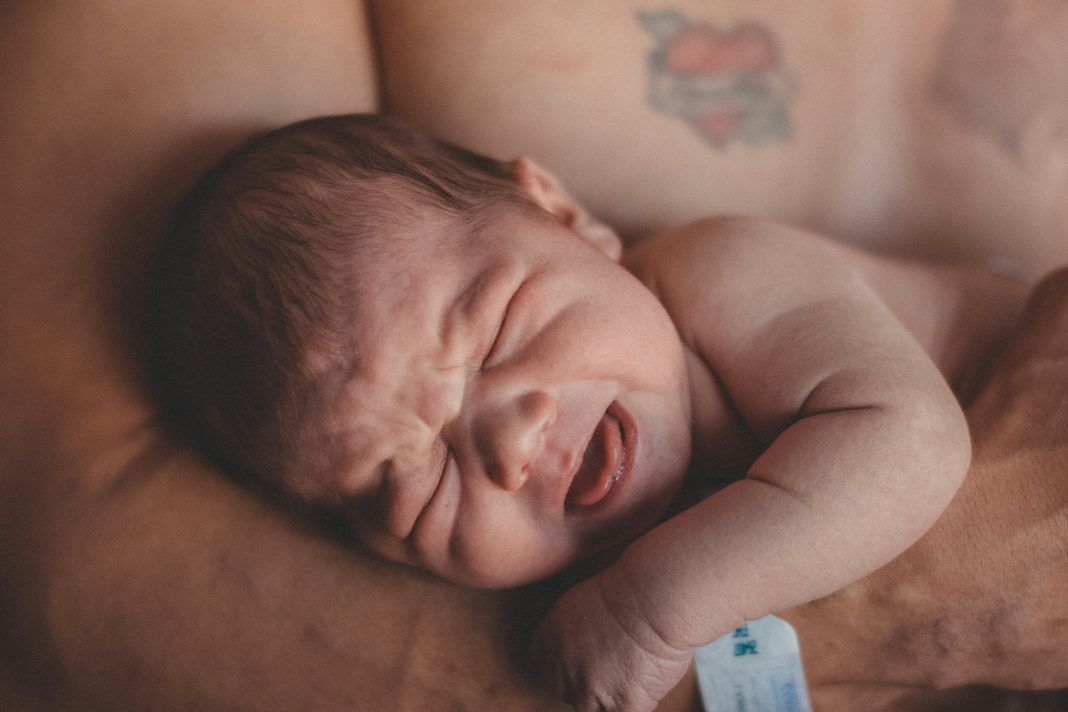When our babies are experiencing stress, they need to borrow our mature brain to help manage the baby’s stress and return to a safe, regulated state.
Babies can experience stress for all kinds of reasons. Stress can happen when babies have a physical need for feeding, hydration, temperature regulation, discomfort, or pain. Stress happens when babies have an emotional need, feeling lonely, scared, angry, sad, disappointed, or frustrated. Sometimes we’ll know why our baby is stressed, and often we won’t know, and that’s ok! The way we respond is always important. They need us to respond with our supportive presence and lend our brains regardless of the source of stress.
As adults we all have the brain parts to sense a threat, mount a stress response, and regulate ourselves back to a safe regulated state. And even though we have the parts, it’s not always easy to regulate ourselves.
Babies only have the brain parts to sense a threat and mount a stress response. They don’t have the brain parts for self-regulation, they can’t lower their stress on their own. They need you, every time.
Amazingly when we nurture our baby’s stress, we not only help them recover into a regulated state, we also build all of the brain parts in their stress system that contribute to lifelong mental health.
Providing nurture when our babies are stressed is one of the hardest parts of parenting a baby, as babies typically feel stress often and deeply. It is simultaneously one of the greatest gifts a human can ever receive. A gift of lifelong mental health, physical health and loving relationships.
What it looks like when your baby’s stressed
When your baby’s stressed and negative feeling emotions, it will be reflected in their behavior. All behaviors have an underlying emotion. Every baby will have their own stress behaviors or cues, you’ll need to observe your baby to learn. Some babies will show early stress cues before late stress cues, and some babies with more reactive temperaments will show more late stress cues. It’s ideal to respond when you first notice your baby is experiencing stress.
There are four types of stress responses: fight, flight, freeze, and combination. In fight responses we are driven to confront the stressor. In flight responses we are driven to run away from the stressor. In freeze responses we are driven to shut down in the presence of the stressor. In combination responses we simultaneously experience fight or flight responses with freeze responses. Remember we always want to respond to lower our baby’s stress curve regardless of their behavior.
Early stress cues
Fight‐or‐flight: whimpering or whining, lower- intensity crying, clinging to a parent or caregiver, repetitive movements, or running away.
Freeze: hiding behind a parent or caregiver, withdrawing from social interaction or play, staring, and low movement
Combination: Mixed fight, flight, and freeze cues.
Late stress cues
Fight‐or‐flight: screaming, loud crying, irregular breathing, face turning red, losing body posture like an arched back or flailing, asymmetrical arm and leg movements, hands in fists, spinning, repetitive movements, head shaking from side to side, biting, hitting, and kicking.
Freeze: more intense hiding, withdrawal, curling up in a ball, lying down, or unresponsiveness.
Combination: Mixed fight, flight, and freeze cues.
When to approach baby
During a baby’s stress, they might want to be in your arms right away, or they might need some space before wanting to be in your arms. Take a look at your baby and see what they are telling you with their behavior.
Often young babies, typically under 12 months, want to be held chest to chest immediately. They will cry in your arms or reach up for you and hold you tight.
Older babies, starting at 12-18 months, might want space before being held. They might push you away, hit or kick you – this is communication that they don’t’ want to be touched. You can sit close to them, assure them you are there when they are ready for a hug. After time they will want contact and might put up their arms or seek you out for a hug.
How a parent can help lower a baby’s stress curve
Every baby has different preferences for what is most regulating when they are feeling stress. Here are some strategies to try with your baby. Babies like combinations of these strategies, for example, to be held and carried while signing a song, or nursed while gently being rocked and spoken to softly.
- Physical touch: chest to chest holding, skin to skin, rubbing their back or body, touching their hair
- Feeding: offer breastfeeding or chest feeding (if that is available to you)
Movement: walking with baby in your arms or in a carrier, dancing, swaying, bouncing - Singing or speaking: sing a song or a repetitive low tone sound (at the same volume or lower than your baby) or speaking softly
- Nature: Go outside and get some fresh air, find a green space to visit
When we understand what our baby’s stress looks like, when to approach our baby and how to lower their stress curve — we are giving our babies the most valuable gift on Earth. The development of a resilient emotional brain which underlies their lifelong mental health. It is a challenge to be responsive both daytime and nighttime, especially in our cultures of low nurture with little to no support for new parents. However, it is profoundly lifechanging for our babies and for us as parents.






















